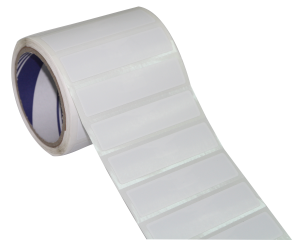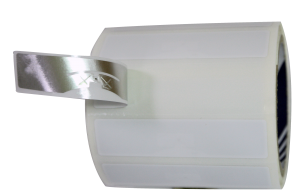Applications:
1. Product anti-counterfeiting, anti-tear and anti-dismantle
※After the label is used, when it is opened for the second time, the antenna is completely destroyed and cannot be used again;
※Using the uniqueness of the TID of the label and the feature that the TID of the label cannot be modified after leaving the factory to achieve anti-counterfeiting;
※To achieve anti-counterfeiting effect by querying the all-in-one machine or the anti-counterfeiting code on the surface of the label.
2. Rewritable chip information
The electronic label is attached to the package of each goods, and the specific information of the goods, storage location and other information are written in the label chip. At the same time, when the goods enter and leave the warehouse, the detailed information of the delivery party can be written, and fixed or portable card readers can be installed in the warehouse and each distribution channel to identify and detect the flow of goods.
3. Out/in storage management:
When going out/in to the warehouse, the warehouse manager will check each item according to the order list, and hand it over to the warehouse keeper to send out/into the warehouse after the inspection is passed. When the goods pass through the fixed reader, the out/in storage information is registered, and then the out/in storage information is uploaded to the host computer, and compared with the pre-warehousing document.
4. Real-time inventory, quickly find goods
Use the handheld data collection terminal to collect data, such as item labels, shelves, and the number of items. The system can automatically generate or manually select the inventory task table according to the pre-set product classification, and carry out the inventory operation. The inventory operation mainly scans the product label and the corresponding storage location information. After the data is uploaded, the system will automatically list the products that have been placed and the products that have not been placed, and perform operations such as inventory surplus and inventory loss as required.
5. Logistics management
It is used to track and locate the location, status and other information of the product transportation process. When an item is loaded onto the delivery vehicle, the system reads the tag, confirms that the item was loaded into the correct vehicle, and sends this information to the software to update the status of the order. The software then associates each ID number with an item on the loading list, raising an alert if the vehicle is loaded with the wrong item or if a shipment of a vehicle is missing.
6. Smart supermarket
After the customer obtains the shopping cart, he/she enters the shopping list in language, selects the product to be purchased, and the system will display the location of the product in the mall and guide the customer there. Customers can use the scanning device on the front side of the shopping cart to check out independently, as well as obtain information on product price concessions, and compare with other merchants of the same product. Every time you purchase an item, the display screen will prompt the items that have not been purchased on the shopping list.


